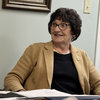Voorheesville chief: ‘The road they’re going down is paid fire departments’
ALBANY COUNTY — As the federal government looks to update its over-40-year-old fire safety standards, an overwhelming majority of those impacted by the regulations — nearly every one of them a non-career firefighter — say they will be both costly and burdensome.
Thomas Cascone, Voorheesville’s fire chief, told village trustees last month that proposed federal standards would place additional responsibilities on the already-taxed local volunteers and 70 percent of them wouldn’t meet requirements, ultimately leading to a costly paid service.
Emergency response workers today face numerous occupational health and safety hazards every day on the job, yet current Occupational Safety and Health Administration (OSHA) standards are woefully outdated and incomplete.
So, since 2007, OSHA has been working to bring the regulations, known as its fire brigade standards, 29 CFR 1910.156, which were first implemented in 1980, in line with best practices established by the Federal Emergency Management Agency (FEMA).
Known as the Emergency Response Standard, the rules would extend beyond the original brigade standard of firefighter workplace safety to other first responders, like those in the emergency medical services.
The draft standard leans hard into paperwork, as OSHA is seeking to require that Emergency Service Organizations (ESOs) establish and implement a broad comprehensive emergency response program, which includes pre-incident planning, standard operating procedures, incident management systems, and post-incident analysis.
The proposed standard would establish minimum medical and fitness standards for first-responders, and also require departments to provide initial and ongoing training for members, ensuring they’ve received enough training to perform their duties.
The proposed rule places an emphasis on departments establishing standard operating procedures for mitigating emergency incidents.
The procedures, according to the proposed standard, would cover a host of emergency circumstances, like mass evacuations; so-called mayday situations, when a fellow first responder signals they’re distress; vehicle operation and preparedness; and rapid interventions, when firefighters have to safely and quickly rescue one of their own who’s become lost, injured, or incapacitated.
OSHA is taking comments on the proposed rule change until early May.
But in the meantime, firefighters across the country are pushing back on the proposed rule, arguing that implementation would not only be costly, but could push broad swaths of people out of the profession, seven out of every 10 nationally of whom are volunteers.
According to the United States Fire Administration, there are approximately 1.11 million career and volunteer firefighters in the nation: about 567,000 volunteers, another 369,000 career, and another 133,00o-or-so classified as “Active Firefighters - Paid per Call.”
In total, the fire administration says there are about 27,140 registered fire departments in the country, with New York state containing 1,645 of them, of which a whopping 90 percent are staffed by volunteers.
In Albany County, there are 40 registered fire departments with 64 stations, according to the data. Two are career-staffed non-municipal departments, the Watervliet Arsenal and Albany airport, with two cities, Albany and Cohoes, also having all-paid staff.
Firefighters in Albany County number 1,680 volunteers, 369 career, and 1o are paid-per-call, while there are another nearly 400 non-firefighting volunteers, like fire police, accounted for by the U.S. Fire Administration.
One local volunteer first-responder recently apprised elected officials of what they could expect if the proposed rules were adopted.
During its Feb. 28 meeting, the Voorheesville Board of Trustees was told by village fire Chief Thomas Cascone that New York state “wants to up the OSHA.”
OSHA has jurisdiction only over the nation’s private sector — the original act establishing the office explicitly excluded from its authority employees of state and local governments. But the 1970 legislation also grants state governments the authority to establish, implement, and enforce their own federally-approved workplace safety rules, if they are at least as effective as OSHA private-sector protections.
The so-called state plans can cover either both private and non-federal, public-sector employees, or a state can choose to adopt an OSHA-approved plan with oversight of only state and local government employees, which is the case in New York state.
There are places in the proposed Emergency Response Standard, where OSHA states the new regulations wouldn’t extend to the nation’s volunteer fire service departments, but that’s not the case in New York where the state’s workplace safety standards have a history of defining volunteer firefighters as employees.
Cascone effectively told trustees last month that the proposed standard would place additional responsibilities on the already-taxed local volunteers, while simultaneously restricting their abilities to perform said duties.
With some training exercises, just so they could even take place, Cascone told the board a certain but high number of participants would be required to have additional national certifications, which would be a drain on both volunteers’ time and department coffers, and by extension local taxpayers’ wallets.
Comments from firefighters across the country to OSHA about its proposed standard adoption have argued the health and safety administration has dramatically underestimated the cost of implementing the new regulations.
OSHA estimates it will take each firefighter 355 hours of initial training to get brought up to speed with its proposed emergency standard, with fewer hours for smaller departments. Depending on the current level of an EMS employee’s certifications, OSHA estimates one-time, upfront training could take between 48 and over 533 hours.
Cascone also informed the board of all the additional paperwork the department would have responsibility for, and how trustees would be party to it. “You guys would love me because every Tuesday I would have to submit plans no matter what for training,” Cascone said. “So even if we were going to clean up something, I would have to submit plans of what we were doing that night.”
Compliance with its proposed documentation rules would mean an annual additional 173 hours of paperwork for departments, OSHA estimates.
The health and safety administration placed the average annual additional cost of complying with its new standard at about $26,000 for departments with fewer than 25 firefighters, $37,000 for departments with between 25 and 49, and $48,000 for departments with 50 and 99 responders.
The Voorheesville Fire Department, according to federal fire administration data, has 46 active volunteer firefighters, while there are a combined 85 active volunteers in the other two departments serving the town of New Scotland.
In Guilderland, where only Westmere, with 61, has more than 50 active firefighters, six volunteer departments have about 285 active firefighters. The three departments serving the Hilltowns count close to 130 active volunteers.
The other issue Cascone made trustees aware of was OSHA’s decision to incorporate some National Fire Protection Association standards as part of its proposed regulation.
The National Fire Protection Association is an international not-for-profit organization based in Massachusetts which, by its own description, “advocate[s] for the elimination of death, injury, property, and economic loss due to fire, electrical, and related hazards” by “delivering expert knowledge through more than 300 codes and standards, innovative research, professional training, public education, and outreach and advocacy.”
The incorporation and adoption of NFPA 1582 would subject first responders to annual exams meant to “detect physical or medical condition(s) that could adversely affect their ability to safely perform the essential job tasks.”
Departments would also be on the hook for determining their members’ fitness for duty, with OHSA proposing each “establish and implement a process to evaluate and re-evaluate annually the ability of each team member and responder to perform the essential job functions, based on the type, level, and tier of service.”
With the adoption of the more stringent NFPA standards, Cascone told Voorheesville Trustees last month, “Seventy percent of our firefighters would not be eligible.”
He also said, “The road they’re going down is paid fire departments … Studies show that, if there’s no volunteer fire service, your taxes will go up 47.7 percent.”


